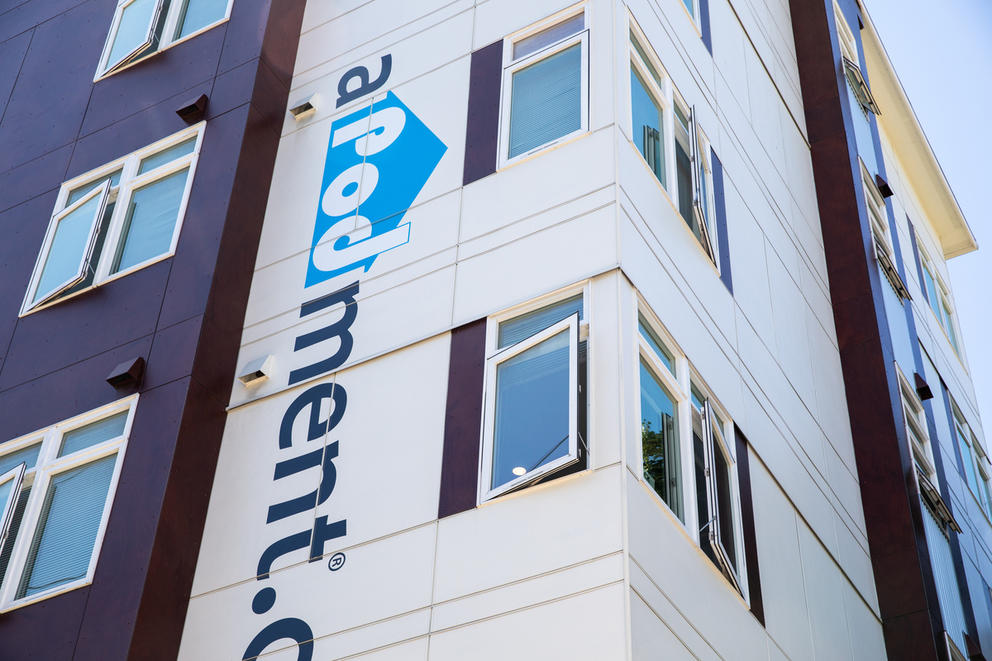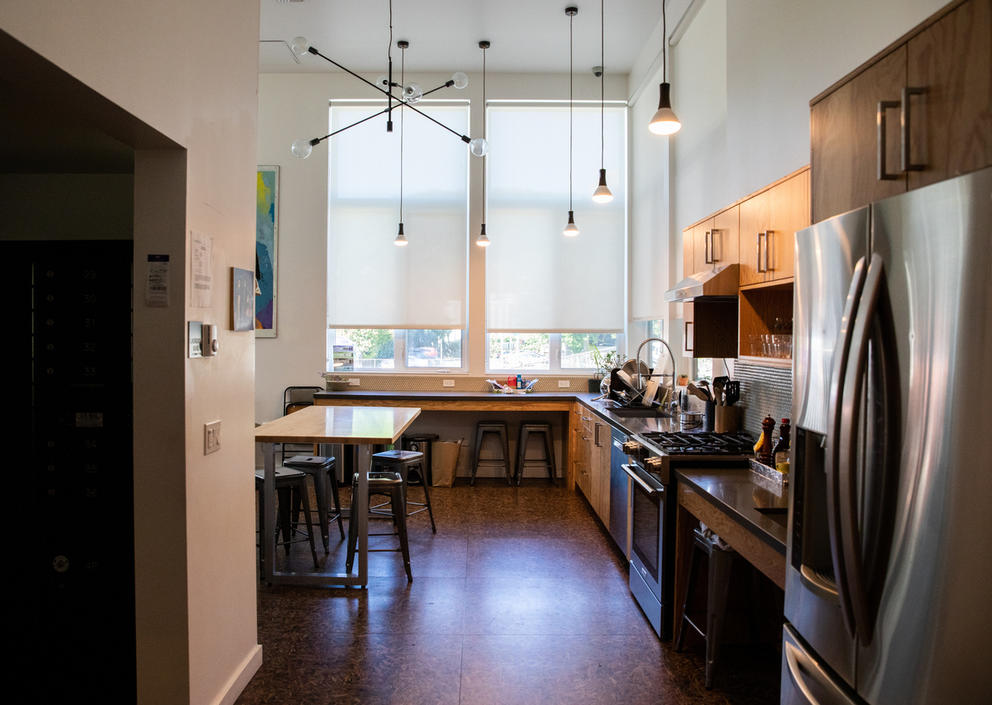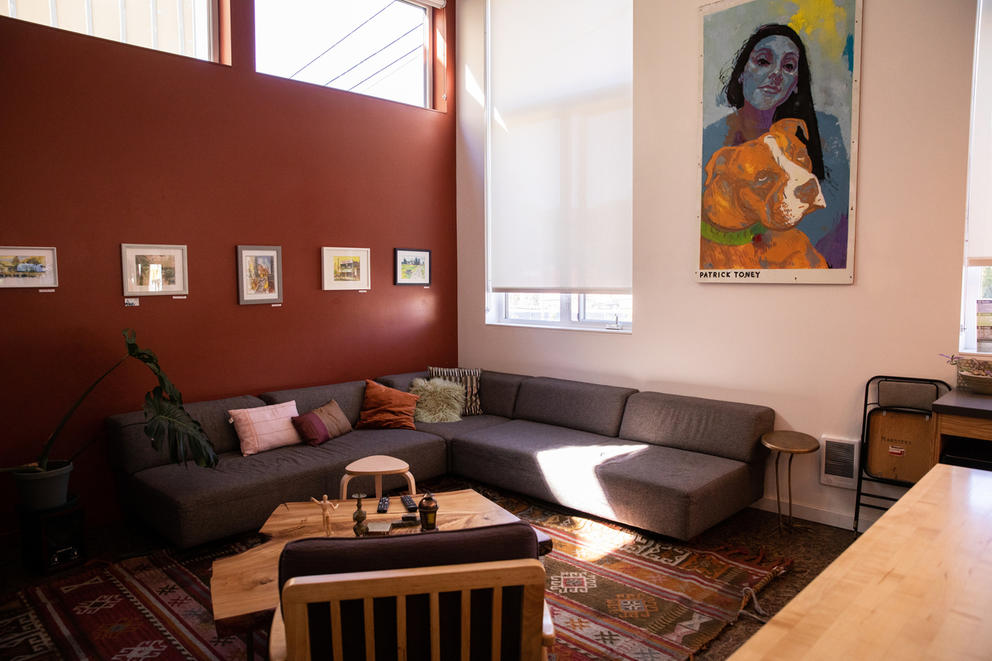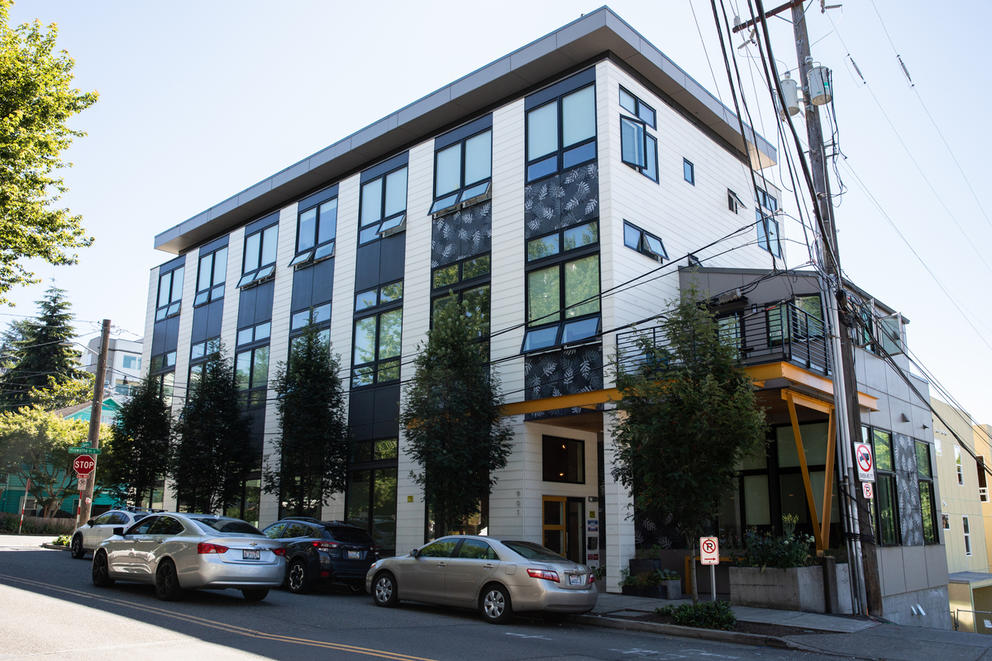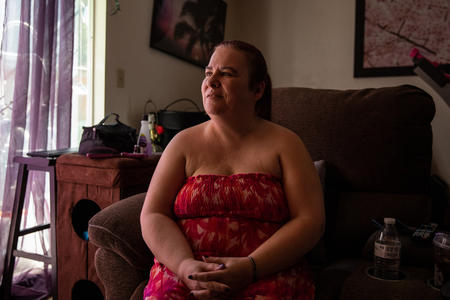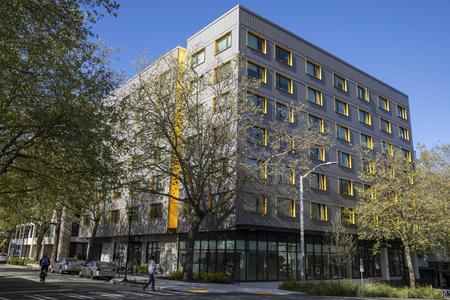“I’ve toured them before but it’s a good refresher that, quite candidly, where we can find housing and build housing is going to be critical,” Harrell said during a July event with We Are In, a business and philanthropic group funding homelessness work in King County.
Seattle had a micro housing boom that started more than 10 years ago, during which developers built thousands of units of the dorm-style apartments. Then in response to public backlash, the Seattle City Council heavily regulated where micro apartments could be built, what amenities they had to include, how large they had to be and other guidelines developers said made them more expensive and less appealing to build. The result is vastly less micro housing being built in recent years.
The term micro housing actually refers to two types of housing. The first is congregate apartments, the tiny dorm-style rooms with private bathrooms in each unit, and shared kitchens, laundry and other common amenities. These rooms are often smaller than 150 square feet and typically offer shorter term leases than traditional apartments. “aPodment” is the name of a development company, but has become synonymous with congregate apartments, the way Kleenex is to tissues. aPodment did not respond to an interview request.
Rents start around $800 for the tiniest aPodments and go up to $1,500 for larger loft units, which can be more than 250 square feet. According to data from apartmentlist.com, the average Seattle studio rents for $1,839.
The second type of micro housing is called small efficiency dwelling units (SEDUs). These are essentially extra-small studio apartments with full bathrooms and kitchens in each unit. SEDUs can be as small as 220 square feet and rent for about $1,300. City building code defines a traditional studio as a minimum of 300 square feet.
Harrell remains vague about his plans for micro housing. Asked for details about which direction he might take, his office responded with a statement that said, “The mayor's office is re-examining past decisions made around micro-apartments” and that micro-apartments may help meet the goal of making housing more affordable in the city.
David Neiman is founder of Neiman Taber, an architecture and development firm that’s built and operates several congregate apartment projects and SEDUs. He has also written extensively about micro housing for the think tank Sightline.
Neiman said the easier political path for Harrell would be to change some of the SEDU regulations since most of those changes could be done administratively without city council approval. Increasing the number of aPodments and similar congregate apartments, on the other hand, would require the city council voting to undo some of the restrictions they approved after the backlash.
“The city has made a mistake,” said Neiman. “It wasn’t a mistake in that [city officials] didn’t understand what they were doing. They were doing the bidding of a real powerful constituency [of micro housing opponents], which led to a bad policy outcome that needs to be reversed. But the constituency is still there.”
Around 2009, developers found a loophole in Seattle’s building code that would allow them to build congregate housing. The code defined units by the number of kitchens in a building, since standard apartments each have a kitchen. In congregate apartment buildings, each floor with up to eight apartments and one shared kitchen counted as a single unit, per city code.
Larger apartment buildings must go through an often lengthy — and therefore expensive — design review process where a review board weighs in on the project’s aesthetics, neighborhood fit and other elements. Because of the way congregate apartment units were counted, developers didn’t meet the threshold of a project that had to go through design review. And because developers could fit more tiny units in each building, the projects were profitable and appealing to build.
That resulted in Seattle’s micro housing boom from 2008 to 2016. During this time, the city permitted more than 3,000 units of micro housing.
With the boom came a backlash. Residents took issue, especially those in neighborhoods that were zoned for multifamily homes, but predominantly consisted of single-family houses. At one city meeting discussing micro housing, a Roosevelt resident called aPodments “a cancer on our neighborhoods.”
In 2015, then-city councilmember Tom Rasmussen, who led the charge for more micro-housing regulation at the time, likened them to Soviet-era housing. “The goal again is to ensure that, as we grow, we don’t look like an Eastern Bloc city,” he said during a city council meeting. “I’ve been to Poland. I know what they look like. They’re bleak.”
In 2014 and 2015, the city council – including then-city councilmember Harrell – and the planning department closed several congregate apartment loopholes, including requiring developers to complete design reviews for their micro housing projects, and limiting where congregate housing could be built, banning it from low-rise residential zones that included large swaths of Capitol Hill, Ballard and Fremont.
Though there are still plenty of places in the city where congregate housing can be built – aPodment opened a new project in Rainier Valley in June of this year – developer Neiman said it is less financially feasible to build congregate housing in mid- and high-rise zones since once you’ve added the cost of an elevator, the units need to be about the same size as SEDUs to make the project profitable.
Permit applications for congregate apartments dropped from their 964-unit highpoint in 2014 to just 56 units permitted in 2017. The numbers have since rebounded slightly to 188 and 155 units permitted in 2019 and 2020, respectively.
The city also passed new rules in 2014 and 2015 for SEDUs, including increased building sizes, minimum setback from the sidewalk and required amenities, which drove up minimum unit sizes to around 270 square feet. In turn, rents went up too, Neiman said.
Undoing some of those regulations wouldn’t drastically lower rents, but Neiman estimated that allowing slightly smaller units with fewer amenities in the building would bring rents down to $1,200 instead of their current $1,300.
No single housing option is a silver bullet for Seattle’s housing crisis, but Laura Loe, executive director of the pro-housing nonprofit Share the Cities, thinks micro housing is an important part of the solution.
Many people have likened congregate housing with the old Single Room Occupancy (SROs) boarding houses that were a critical source of housing for the poorest residents in many American cities, but were largely torn down and banned in the mid-20th century. Philadelphia is looking at re-legalizing SROs in more parts of the city in response to its own rising housing costs.
At $800 to $1,500 a month, Seattle’s congregate apartments are not targeted toward the lowest-income residents. But Loe argues it provides a similar flexibility not found in traditional rental housing for people in transition such as new Seattle residents or traveling nurses.
Loe also said there are lots of people for whom the communal setting is really appealing, herself included.
“I want more people to recognize that’s not their dream [living situation], but that we need to make more space for people who do have that dream,” said Loe.


